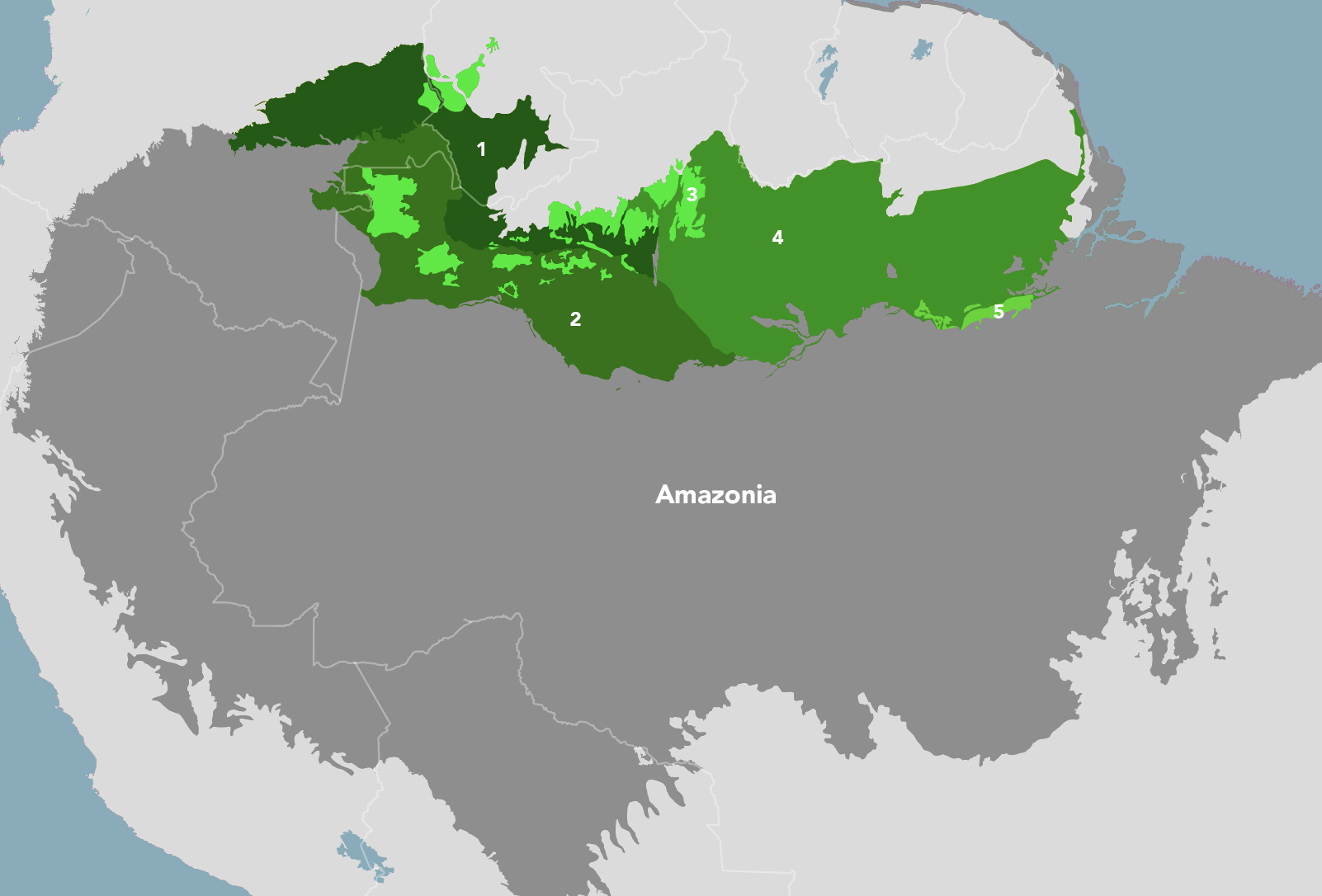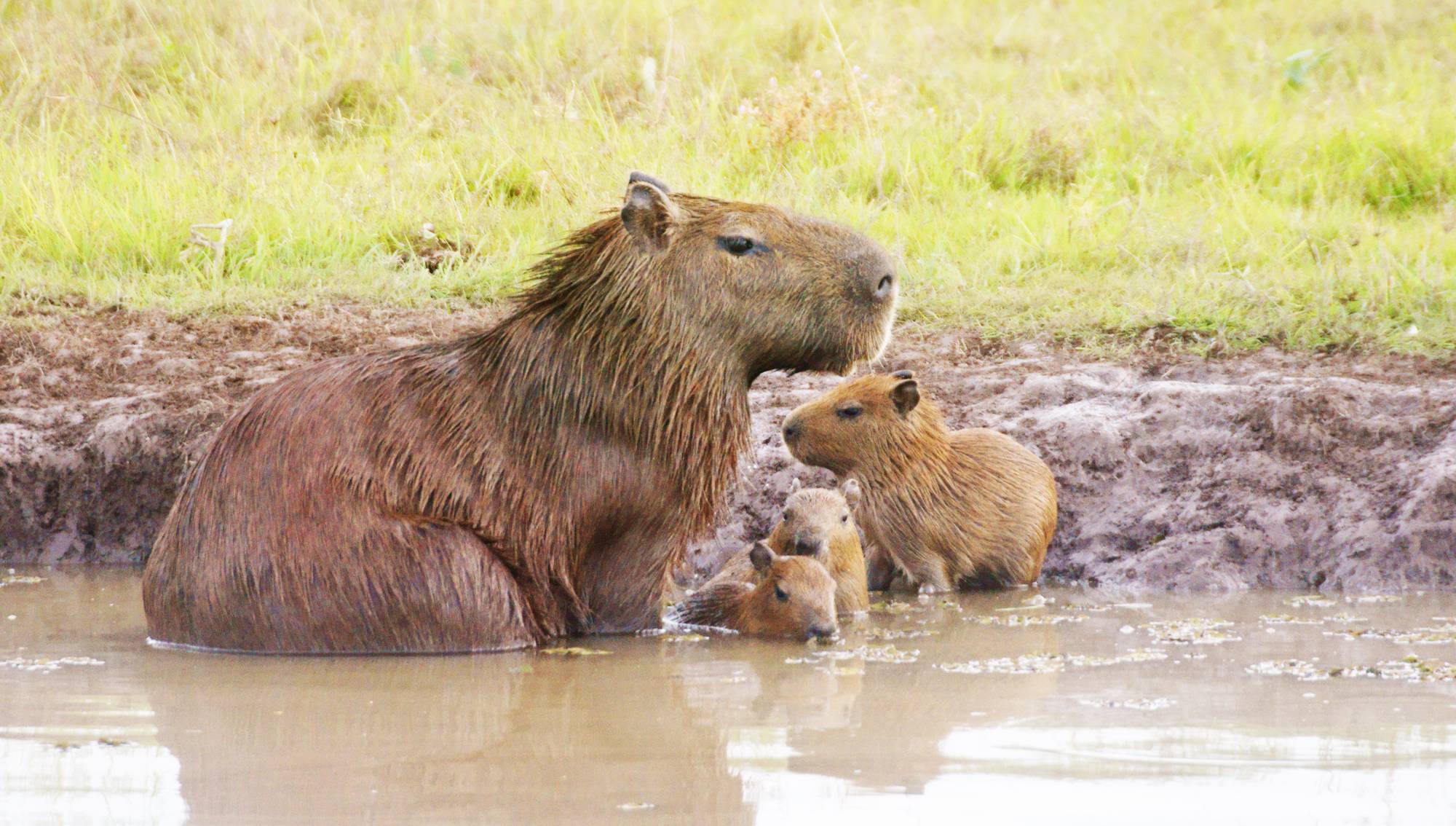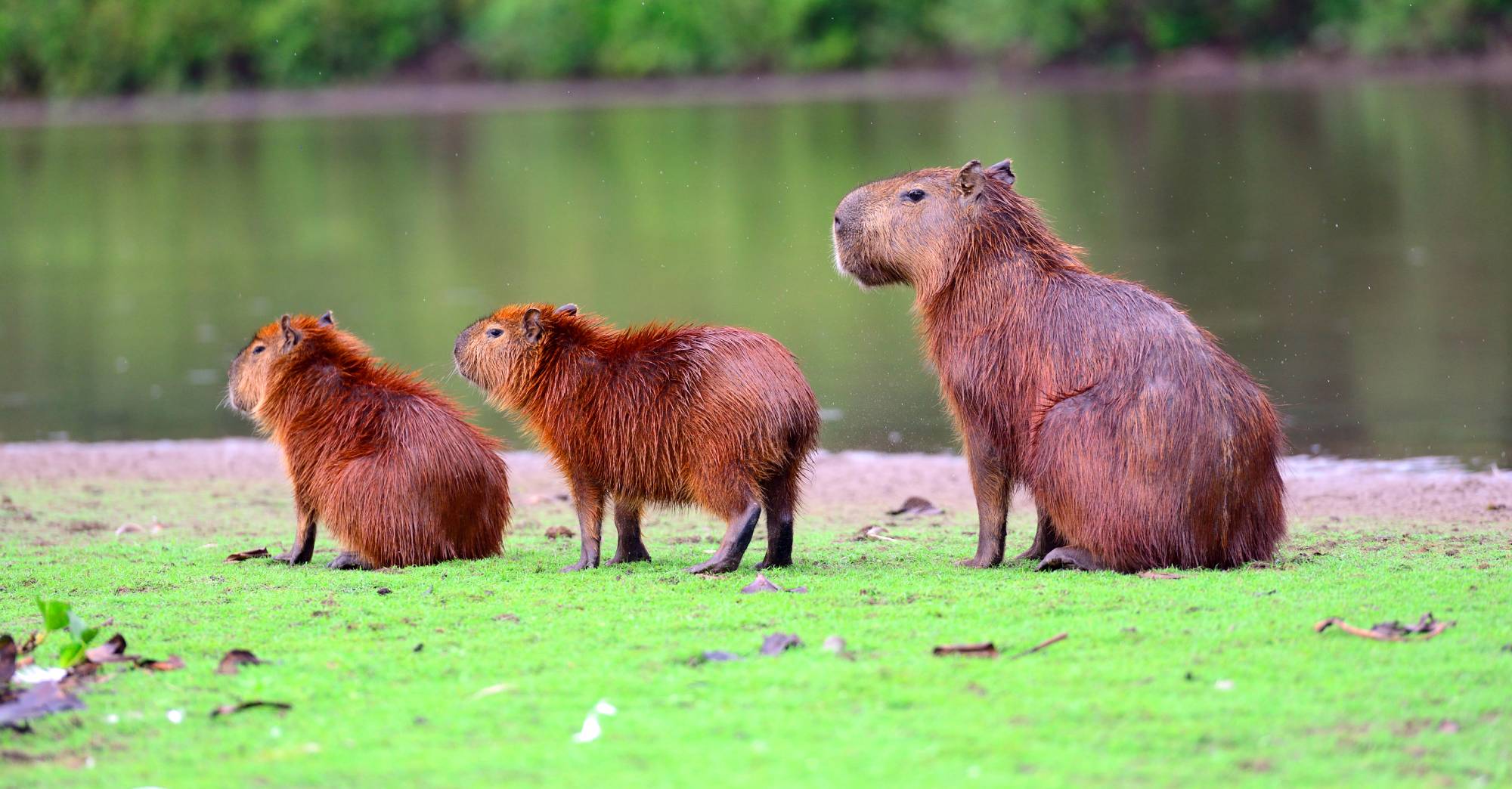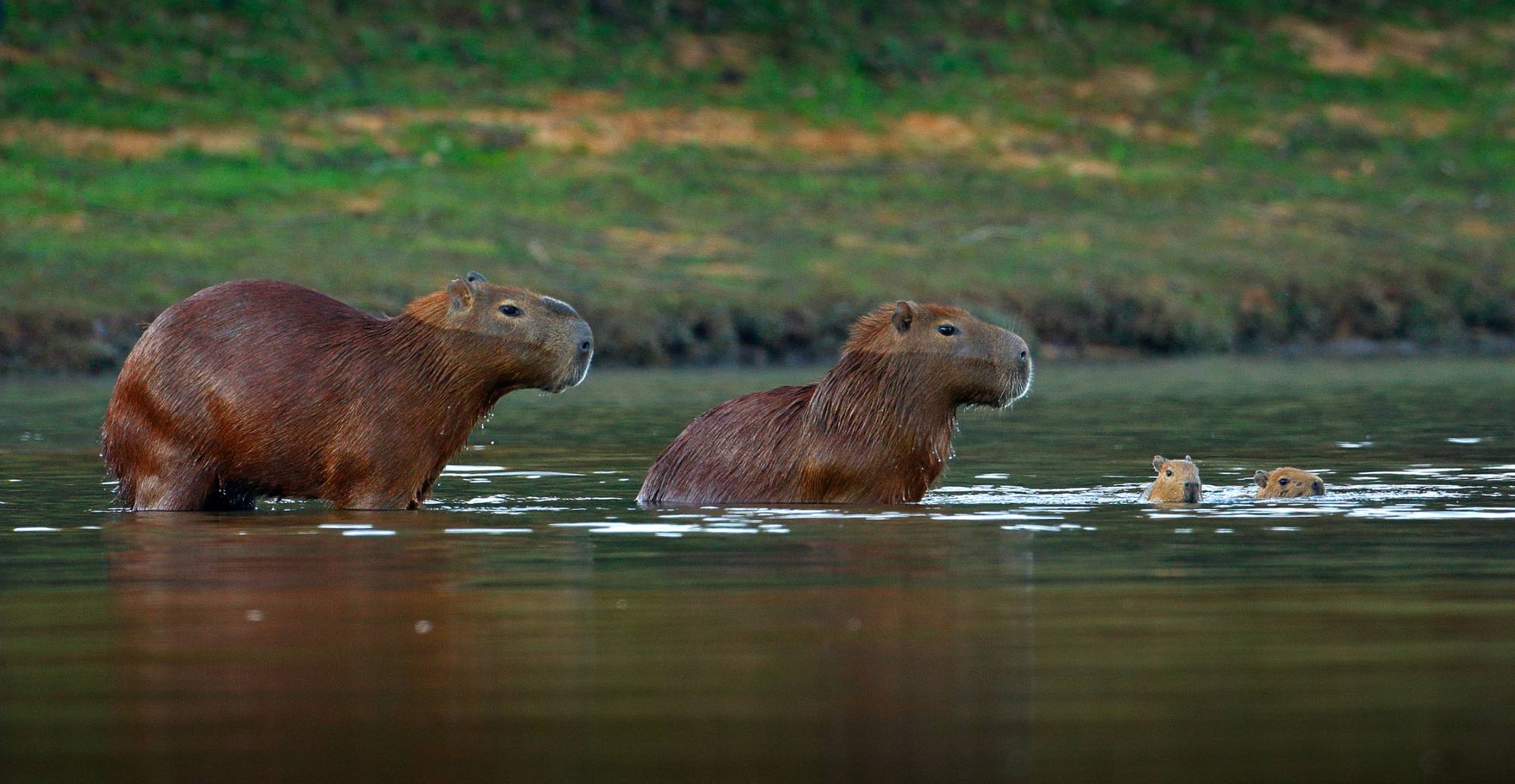Meet the capybara: Gentle giants of South America
Have you ever seen a beaver and thought, "Gosh, that's big?" Then you've probably never seen a capybara. At almost twice the size, the capybara is the largest rodent on Earth. Closely related to guinea pigs and rock cavies, they are distantly related to chinchillas and agoutis. Despite bearing a resemblance to the Rodent of Unusual Size (ROUS) from the movie "The Princess Bride"—which was fictitious—the capybara couldn't be more real.

The capybara (Hydrochoeris hydrochaeris) is the iconic species of the Northern Amazonian Forests bioregion (NT20), located in the Amazonia subrealm.
Its common name is derived from the Tupi word ka'apiûara, meaning "grass-eater." The scientific name, Hydrochoeris hydrochaeris, comes from the Greek words ὕδωρ (hydor, "water") and χοῖρος (choiros, "pig, hog").
Semi-aquatic mammals with an average weight of around 110 pounds, female capybaras tend to be slightly heavier than their male counterparts. They're native to South America and make their homes near bodies of water, such as lakes, rivers, swamps, ponds, and marshes, in densely forested areas. Strong swimmers, they can hold their breath underwater for up to five minutes.

Capybara (Hydrochoerus hydrochaeris) live in habitats close to water, including marshes and estuaries, and along rivers and streams. Image credit: © Rosendo Francisco Estevez Rodriguez | Dreamstime
Their barrel-shaped bodies are covered in reddish-brown, brittle fur that dries quickly on land. With the help of their webbed toes, they can swim efficiently, surveying their above-water surroundings thanks to small eyes, noses, and hairless ears located high on their heads.
They must be vigilant, as they are prey for a variety of predators, including jaguars, pumas, and caimans—a crocodilian alligatorid—on land and in the water. Their young are sought after by anacondas, other snakes, forest foxes, small cats, and birds of prey like the harpy eagle, caracara, and black vulture.

The capybara is the largest rodent in the world, in Pantanal, Mato Grosso, Brazil. Image credit: © Ckchiu | Dreamstime
Unlike the fictional ROUS, capybaras are vegetarians, feeding primarily on grasses and aquatic plants. Since they chew food by grinding it back and forth, their front teeth grow continuously to compensate for constant wear. They're also autocoprophagous, meaning they eat their own feces. This behavior provides them with a source of bacterial gut flora; since animals can't digest grass very well on the first try, eating it twice helps them extract all the necessary nutrients.
If the autocoprophagy doesn't deter you from finding them cute, consider this: capybaras are highly vocal and enjoy "singing" little songs. As highly social mammals, they live in groups of usually 10-20, expressing themselves through purring, barking, whistling, squealing, cackling, whining, grunting, and even teeth-chattering.

A capybara family in water. Pantanal, Brazil. Image credit: © Ondřej Prosický | Dreamstime
Each sound a capybara makes has a significant meaning, from alerting the group to danger to showing approval to signaling departure or arrival. When a group of capybaras decides to move, they form a chirping chorus that could rival a flock of songbirds.
Explore Earth's Bioregions%20and%20a%20yellow-headed%20caracara%20(Milvago%20chimachima)%20in%20the%20Pantanal%2C%20Brazil.%20Image%20credit%20Charles%20J.%20Sharp%2C%20CC%20by%204.0.jpg?auto=compress%2Cformat&w=1440)
.png?auto=compress%2Cformat&w=200)

.jpg?auto=compress%2Cformat&h=600&w=600)

